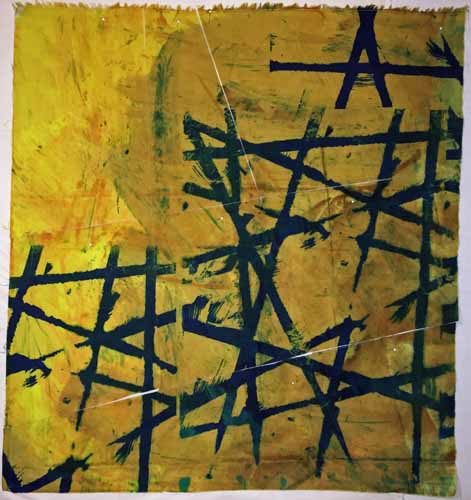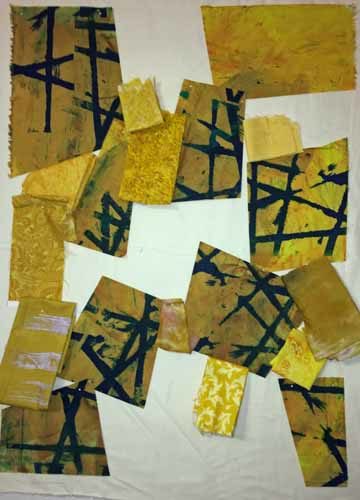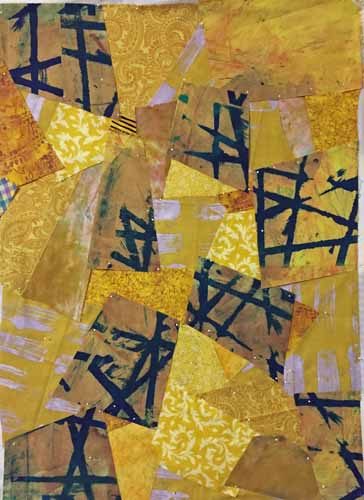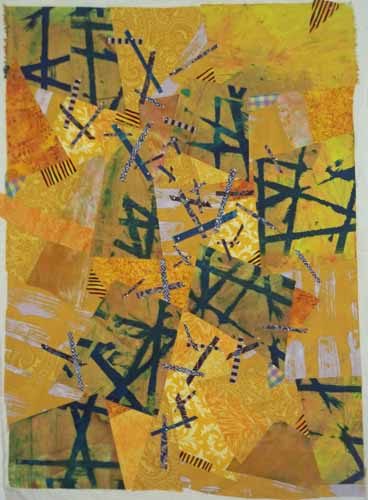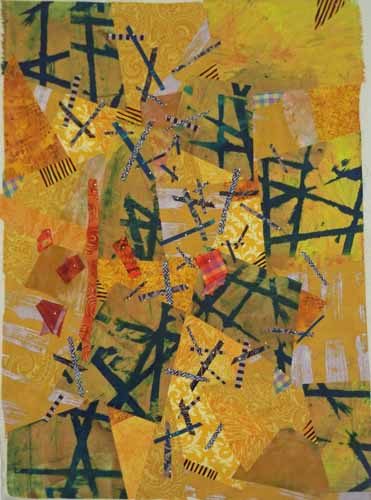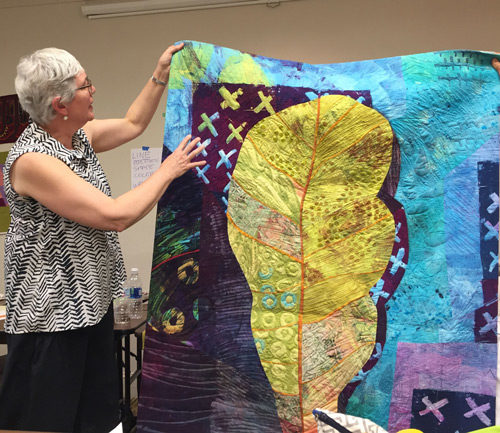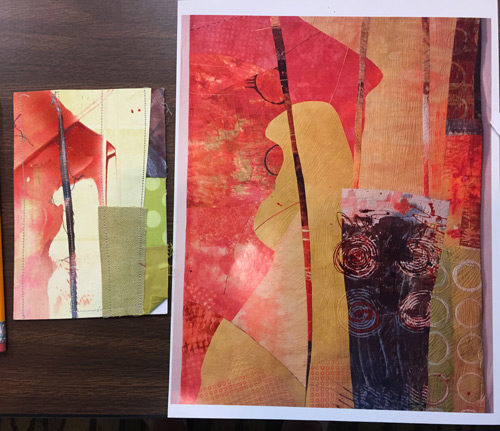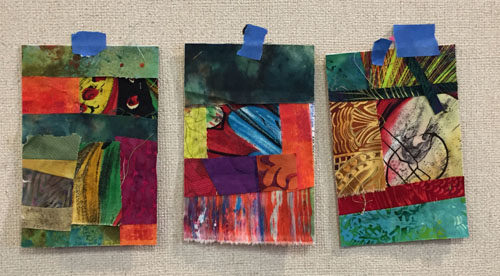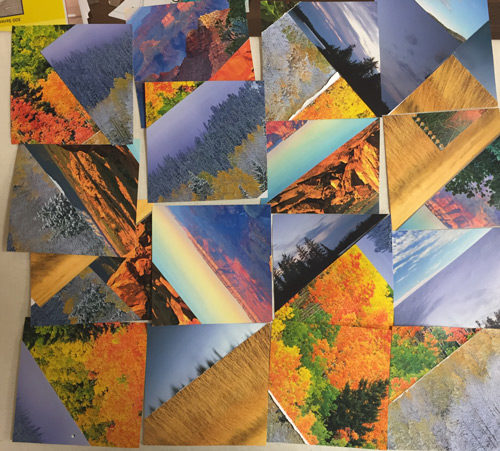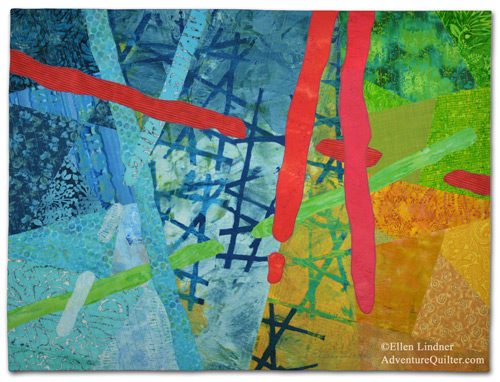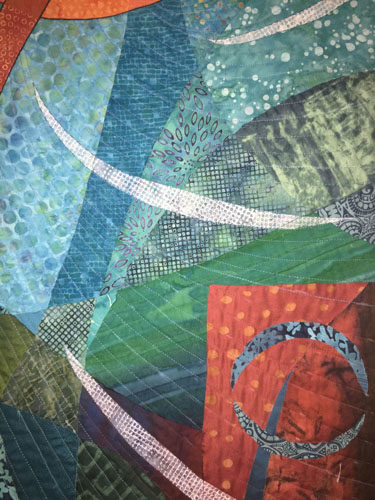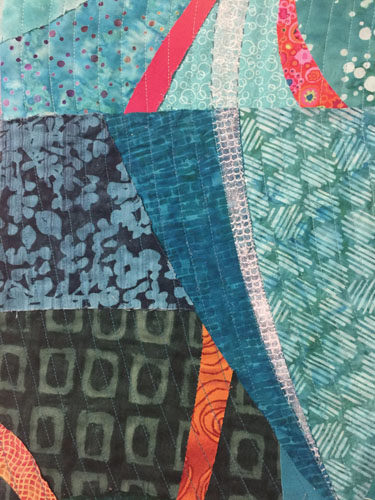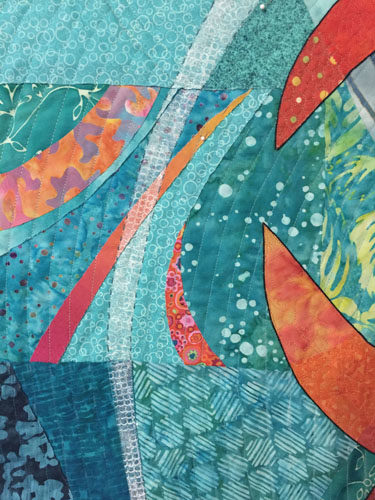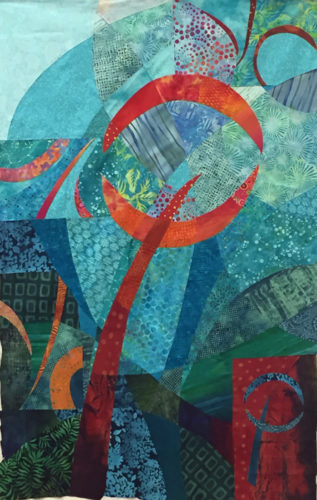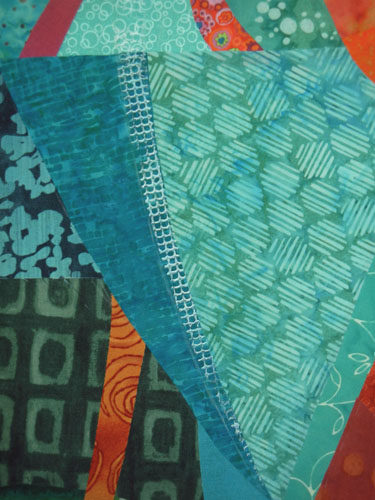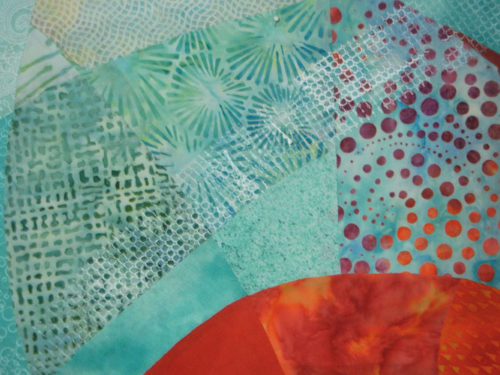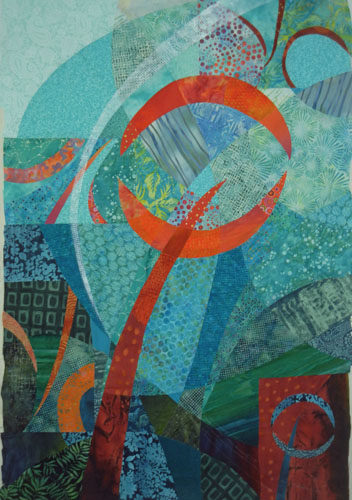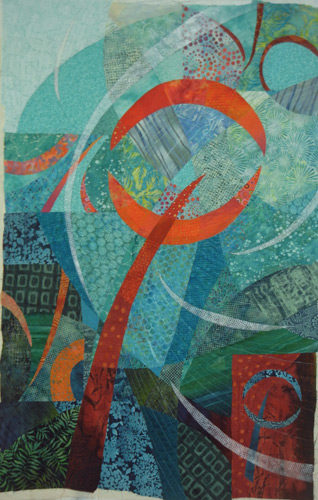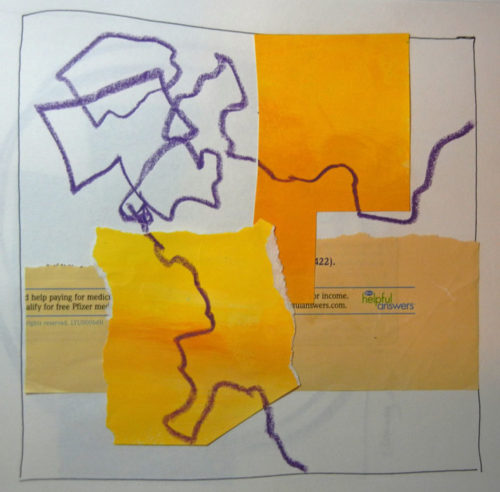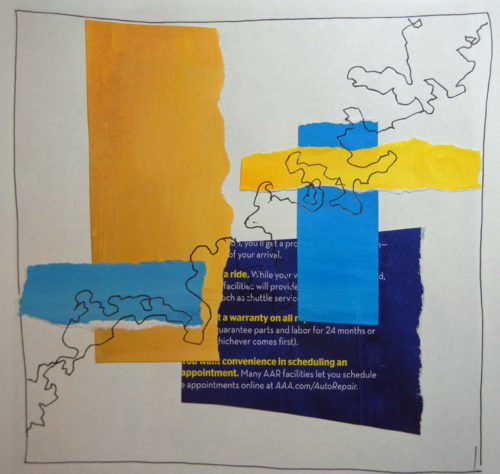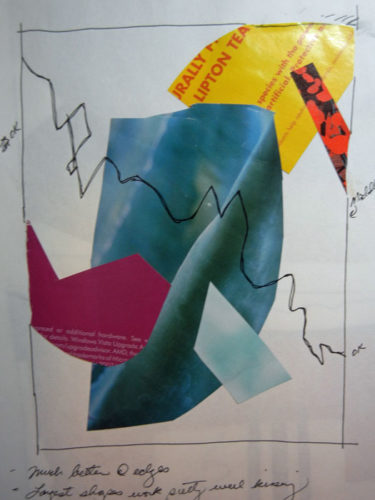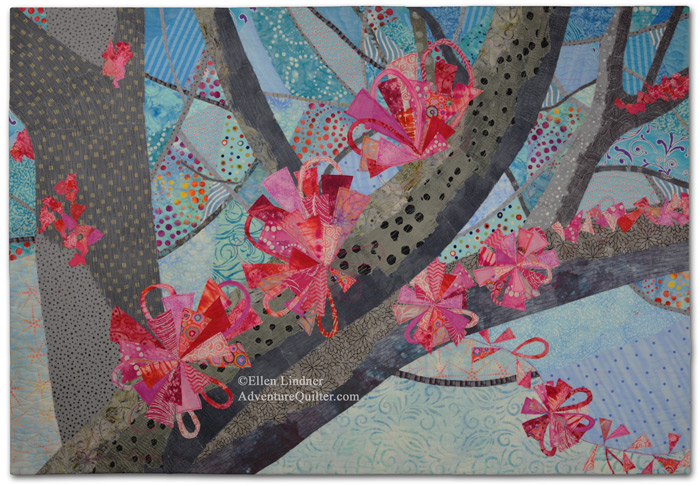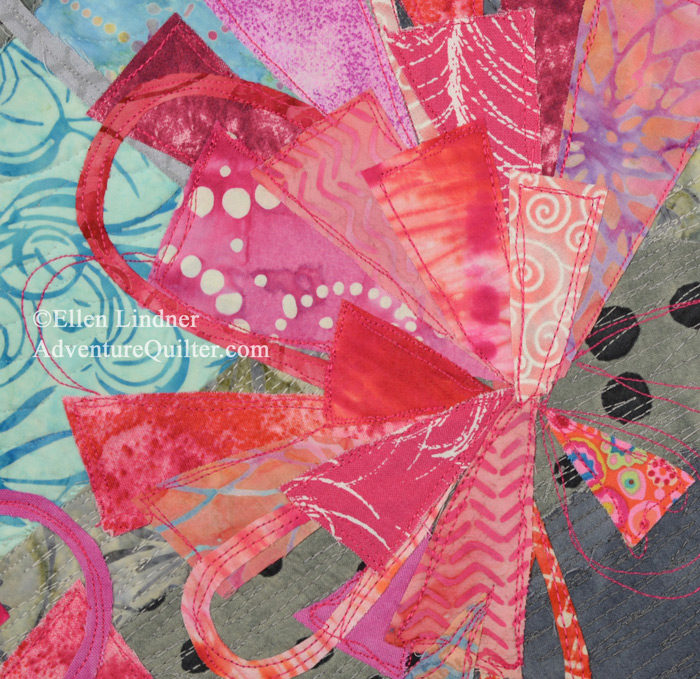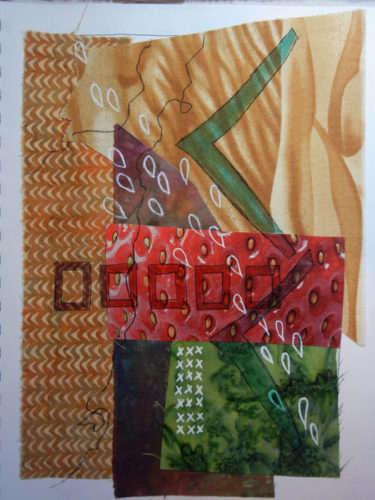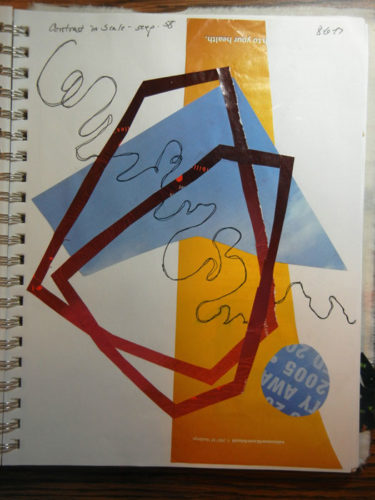After getting so much out of Jane Davies’ book about abstract elements I decided to take an online “class” with her. I put class in quotes, because this was not interactive. You just download the content and do the exercises on your own. More like a book – although she does have interactive classes, too.
This was MUCH more challenging, primarily because it involved a lot of – to me – tricky painting techniques I wasn’t familiar with.
The first exercise was easy enough, however: paint a lot of paper in a monochromatic colorway, then combine it in a gridded collage.
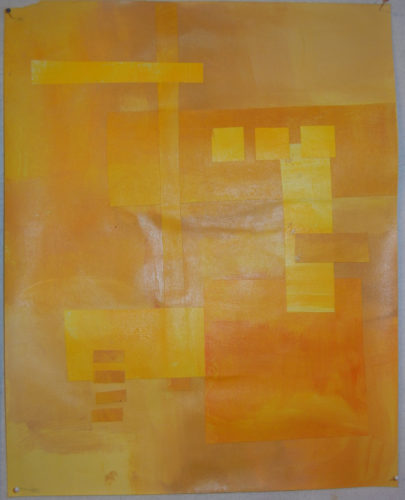
I made two.

The ease stopped there. The next assignment was to make a horizontal collage with different background colors top and bottom. That part was fine. But then, I was supposed to sort of merge the background and foreground. This is what Jane does so brilliantly that is completely foreign to me!
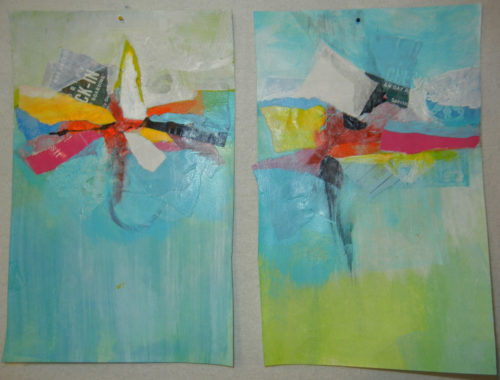
I did 4 of these, with my most successful 2 shown above. In places, I pulled the color of the collage into the background and in other places I painted a background color onto the collage. I had no idea what I was doing! But, it WAS interesting.
Next came an assignment that started with a cruciform composition. That part was okay, but the quadrants were each supposed to be different, and again, the two were supposed to be merged with paint. Again, lots of completely random attempts on my part.

This next 3 examples are so hideous I hesitate to show them to you. Ugh!
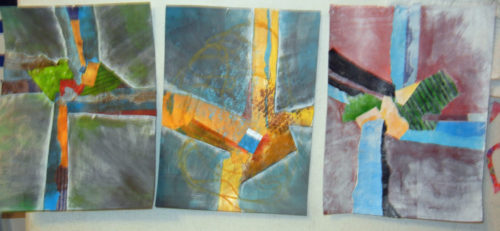
Again, these were cruciforms, with paint added everywhere and then wiped off. I completely overworked these three!
Finally, it was time to put it all together. After watching her video twice I was ready to start. First, I referenced my earlier sample papers showing a variety of ways to make marks with paint.
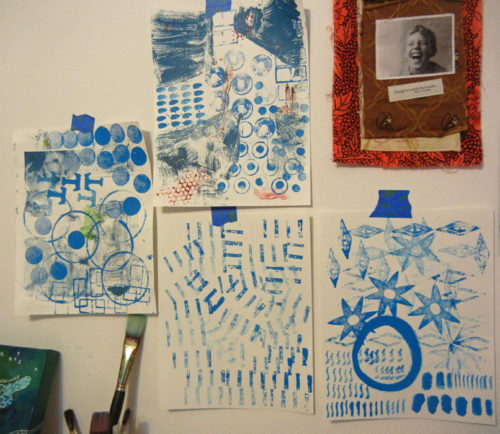
For this assignment I followed Jane’s example of painting over every single layer, (until I got to the last few elements.) Here, the orange circle and the black lines are not painted over. Everything else is.
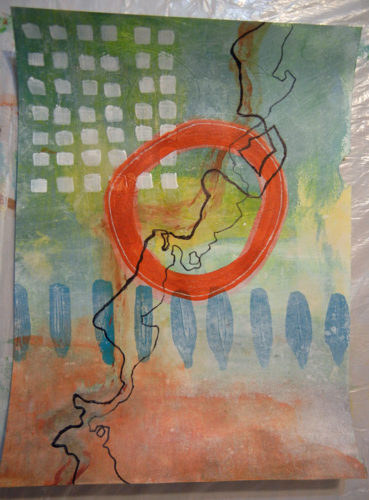
Finally, I had a little bit of success I think.
Things I learned:
– I love the look of partially veiled paint, but I don’t know how to do it.
– I love the idea of foreground and background merging, but I don’t know how to do that with paint either. Maybe with fabric?
– I continue to be entranced with skinny wild lines, inspired by some of Jane’s work.
Questions going forward:
– Can I get a veiled look with fabric? Maybe with sheers or overprinting with paint?
– What’s the best way to add those skinny lines to my fabric art?
– Can I successfully merge both fabric and paint in my art???
You know me: I’ll HAVE to do some more experimenting as I try to answer these questions. Stay tuned.
Ellen Lindner
